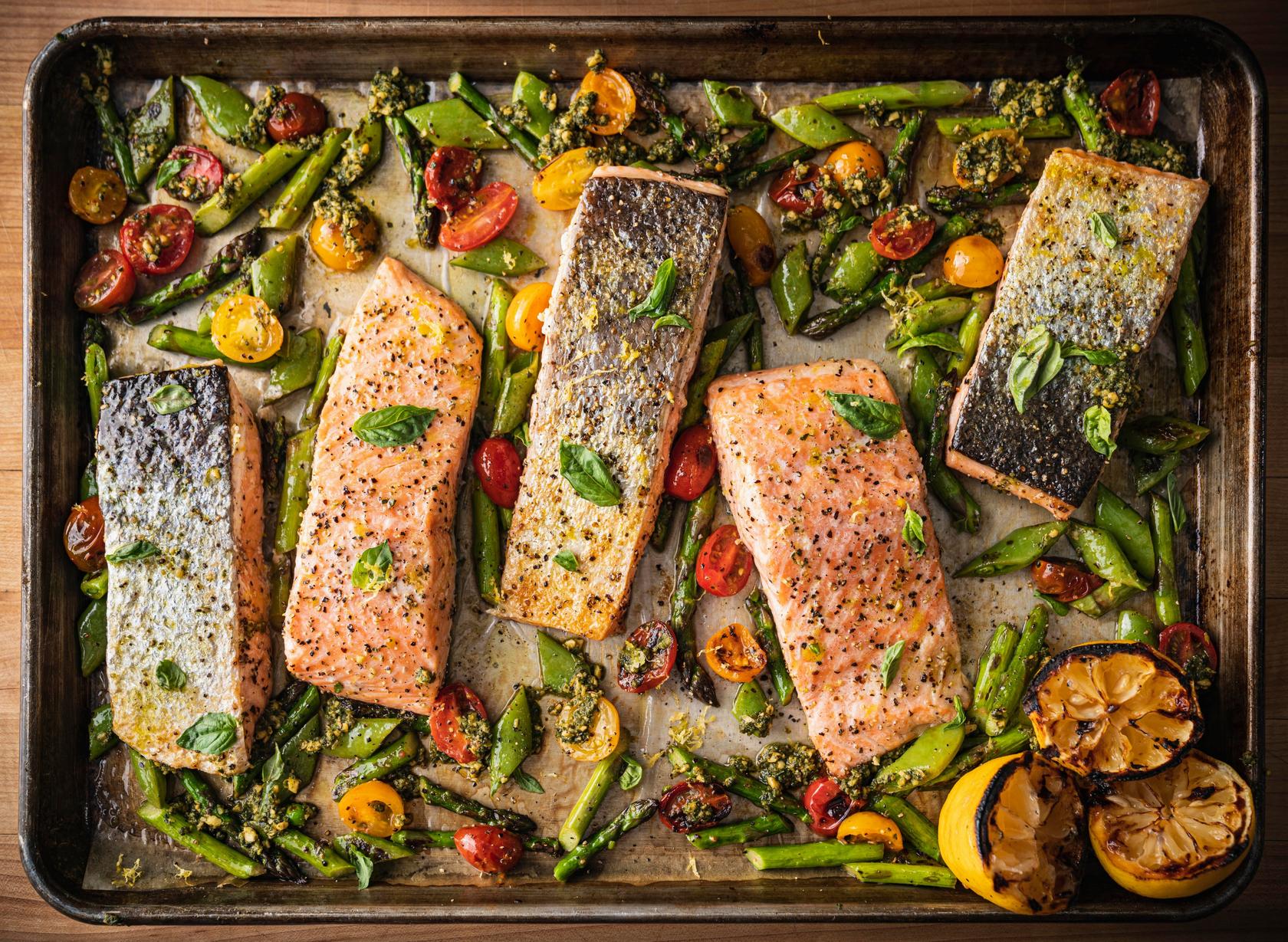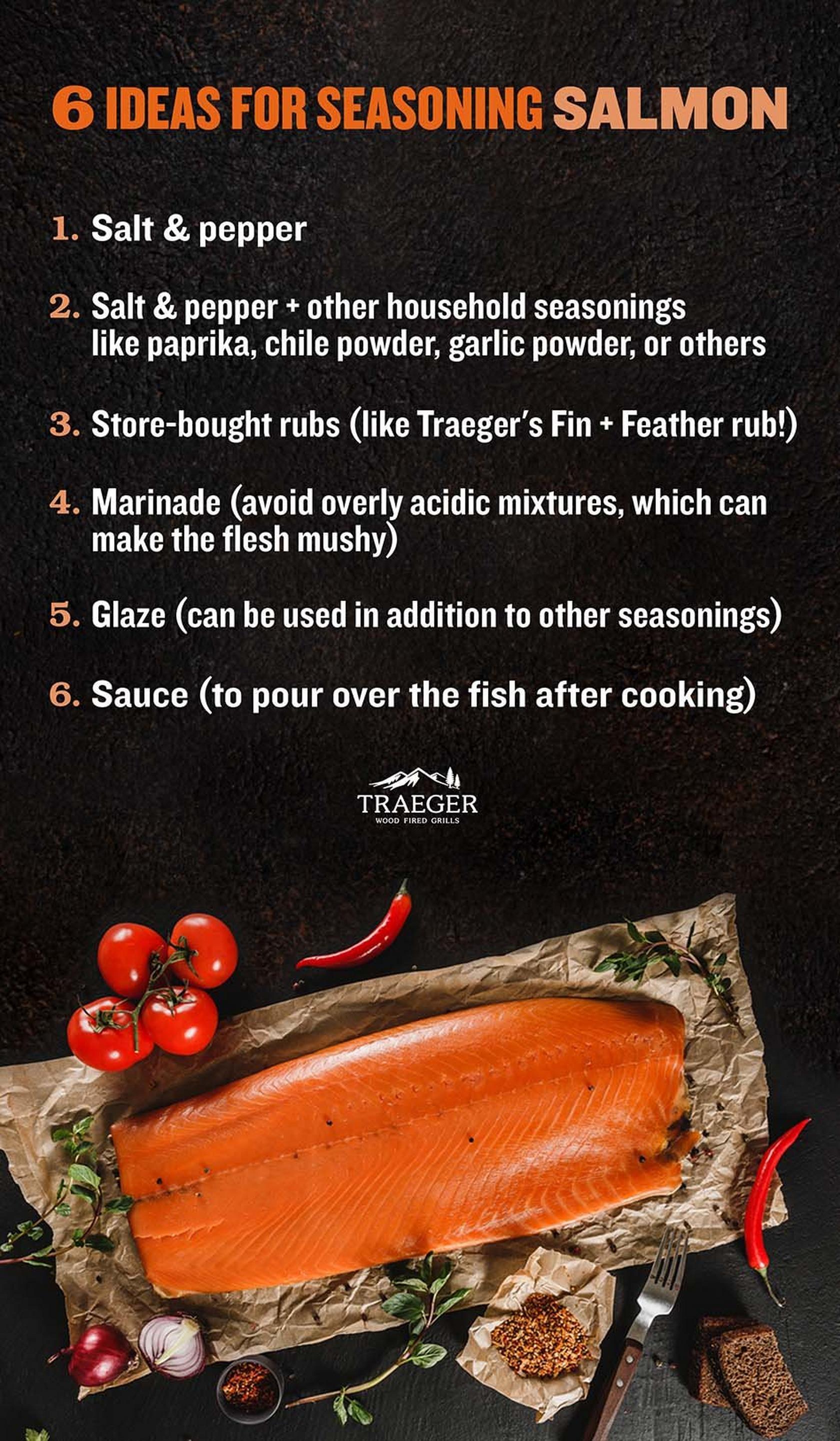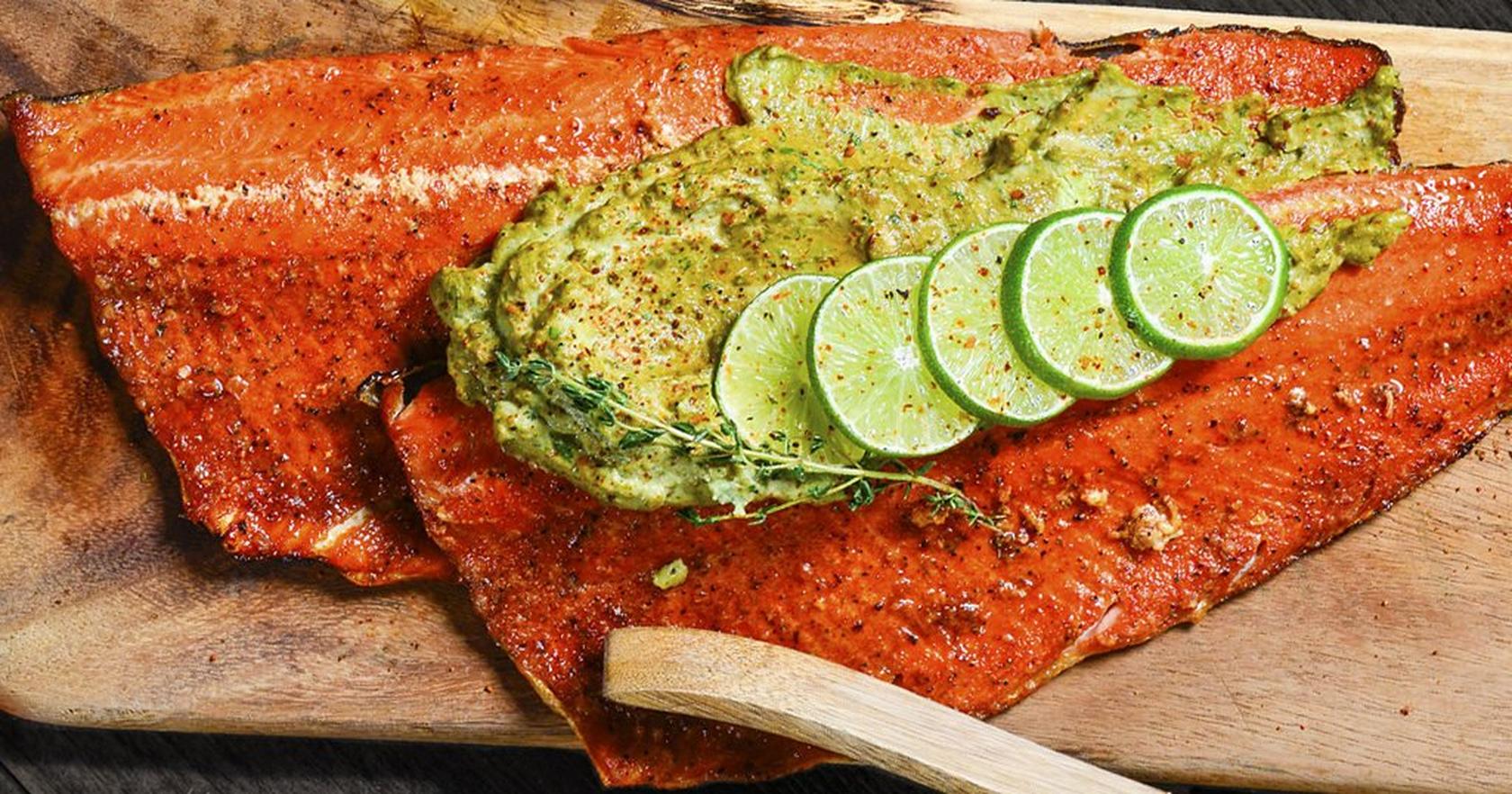
Discover how to season salmon like a pro. Although salmon is one of the most flavorful types of fish, a little extra care with salmon seasoning can greatly enhance its taste and presentation. Read on for the best steps, tips, and recipes.
How To Season Salmon
Seasoning salmon is all about enhancing its bold, natural flavor with the right touch of salt, herbs, and spices. Whether you're grilling, smoking, or baking, a well-seasoned salmon fillet is a surefire way to impress.
Step 1: Choose Your Salmon
First things first: select an epic salmon. A good rule of thumb is to find fresh, high-quality fillets with a vibrant color and firm texture. Avoid anything that smells overly fishy or has a dull, discolored appearance. Wild-caught salmon will be richer and usually more nutrient-dense, while farmed salmon is typically milder and fattier. Read this expert guide about buying the perfect salmon.
Step 2: Prep the Salmon
Before you get to seasoning, rinse the salmon fillets under cold water and pat them dry with paper towels. Make sure to double-check for pin bones as well, you can easily pull them out with tweezers if you come upon any.
Step 3: Oil & Best Salmon Seasoning

Now the good stuff happens. While you don’t have to add oil to your salmon, a light brushing will help your seasoning stick to your fish better (and prevent your salmon from sticking to your grill grates). Brush on all sides (yes, even the skin!).
Once you’ve oiled your fish, it’s time to learn how to season salmon. Chefs and home cooks have a few different methods for seasoning salmon before cooking. These are some of the most popular methods.
- Salt and pepper
- Homemade dry rub (usually salt, pepper, and additional herbs and spices)
- Store-bought dry rub
- Salmon marinade
- Salmon glaze
Our favorite spices to use with this type of fish are paprika, chile/chili powder, garlic powder/salt, cumin, onion, and ginger. You can also shop store-bought salmon rub like our Traeger Fin & Feather Rub, Anything Rub, and Traeger Rub.
Step 4: Let It Rest
After you’ve seasoned your salmon, let it rest at room temperature for about 15 minutes so that the flavors can meld together.
Once you’ve seasoned your salmon to perfection, read our expert salmon grilling and smoking guides.
Tips For How to Season Salmon
Do you season salmon before cooking?
Yes, season salmon before cooking. Seasoning will enhance the flavor of the fish, help the flesh stay firm, and protect the vibrant pink color of the salmon.
Salmon is also seasoned before making smoked salmon over very low temperatures. This article will focus on salmon that is cooked at 350 degrees Fahrenheit or higher.
What are the best flavors for salmon?

Just about all flavors work with salmon. Because salmon is high in fat content and a firm fish, it has its own flavor that can hold up to strong flavors like garlic, ginger, hot pepper, teriyaki, and others
But like all fish, salmon is a little delicate and also works well with more subtle flavors like fresh herbs and citrus. If you’re looking to go the simple route with your salmon, zest or juice a lemon to bring out the richness of your fish.
Marinades that are excessively sweet or extremely sour are a bad pairing, but most seasonings that you find will taste fine. Since salmon can handle most flavors well, it's a good fish to experiment with new flavor combinations.
Can you marinate salmon?
Marinating salmon can add additional flavor and help the fish stay moist during cooking. Most marinades include an acidic element like lemon or vinegar which adds a pleasant tanginess to the fish.
Salmon is considered by some to be a "fishy" tasting fish because it is firm and high in fat. Fillets that aren't perfectly fresh may also have a slightly fishy flavor. If you're worried about an overly "fishy" taste, an acidic or spicy marinade will mask those flavors. Our Sweet & Spicy Sriracha Salmon recipe is a good choice.
Salmon can be marinated for up to one hour, except in the case of a marinade that's extremely acidic. Overly acidic marinades will start to firm up fish and dry them out before cooking, so keep an eye on any marinade that's heavy on lemon or vinegar.
How do you glaze salmon?
A thin layer of glaze, applied to the surface of the salmon before cooking, adds flavor and also acts as a protective layer that helps prevent the fish from drying out during cooking.
Because the glaze needs to stick to the fish, most salmon glaze recipes include a spreadable fat or oil component like mayonnaise.
You can use a glaze on its own, or season the salmon and then apply the glaze, like in our Simple Glazed Salmon Fillets recipe.
What kind of sauce should I add?
Another method for adding flavor and moisture to cooked salmon is a sauce added after cooking. Creamy sauces go well with salmon because they complement the fattiness of the fish.
If you use a sauce, we would recommend seasoning the salmon before cooking in addition to applying the sauce after cooking, as in our Red Curry Salmon with Avocado Creme recipe. The seasoning will help the fish stay firm and bright in color during cooking.
Best Salmon Recipes
You know the steps for how to season salmon, so make sure to try these Traeger-approved recipes at home.
Seasonings: Traeger Fin & Feather Rub, garlic, parsley, and lemon
Seasonings: Traeger Fin & Feather Rub, balsamic vinegar, garlic, and honey
Seasonings: Soy sauce, brown sugar, rice vinegar, Sriracha, ginger, garlic, chipotle chile powder, Traeger Chicken Rub, sesame oil, scallions, sesame seeds
Seasonings: Traeger Fin & Feather Rub, mayonnaise, Dijon mustard, lemon juice, tarragon, dill, and parsley
Seasonings: Soy sauce, oranges, brown sugar, garlic, ginger, sesame seeds
Honey Balsamic Salmon
by Traeger Kitchen
48 Reviews
Prep Time
5 Min
Cook Time
25 Min
Serves
2
Pellets
Pecan
Wood-fired fresh salmon grills to sweet and flaky perfection. This salmon recipe will keep your family coming back for more.
Ingredients
main
| 1 Medium | salmon fillet |
| To Taste | Traeger Fin & Feather Rub |
| 1/2 Cup | balsamic vinegar |
| 1 Tablespoon | minced garlic |
| 2 Tablespoon | honey |
1
Season the salmon with Traeger Fin & Feather Rub.
2
Make the glaze: In a small saucepan, combine the vinegar, garlic, and honey. Bring to a simmer over medium heat and cook until reduced by half and thick enough to coat the back of a spoon, 10-15 minutes. Using a basting brush, coat the salmon with the glaze, reserving any leftovers for serving.
3
When ready to cook, set the Traeger temperature to 350℉ and preheat with the lid closed for 15 minutes.
4
Place the salmon fillet directly on the grill grates. Close the lid and cook until the salmon is opaque and flakes easily with a fork, 25-30 minutes.
5
Transfer the salmon to a platter or plates and serve immediately. If desired, warm any remaining glaze and drizzle over top of the salmon. Enjoy!